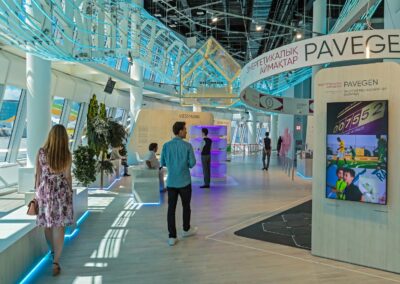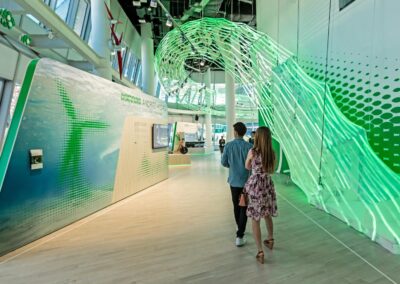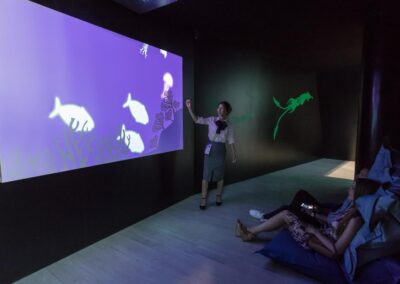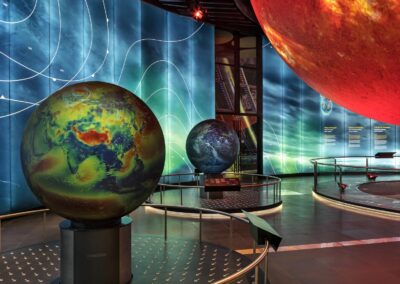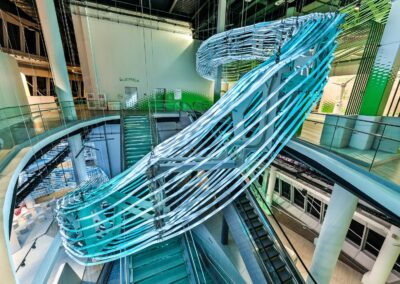“Energy Best Practice” Pavilion, EXPO 2017, Astana/Kazakhstan
Client:
Commissioned by:
Date:
Location:
Supplied Services for this Project:
We were responsible for the planning and technical realisation of audio, light, video and event IT as well as for the corresponding infrastructure of the “Energy Best Practice” presentation. This pavilion was the symbolic central point of the EXPO and presented pioneering technologies as well as a wide range of different forms of sustainable energy.
Divided into six thematic areas on two floors, the “Energy Stream” light sculpture was the connecting element. It was formed by 30 parallel splines made of a total of 9,000 metres of RGB-LED FlexStrips. We were able to control each pixel individually and animated content was displayed using pixel-mapping software.
An BeWunder team headed by Robin Agarwal developed and planned the entire control system in-house especially for this project; some of the components were bespoke products manufactured to our specifications. A glassfibre network with redundant design formed the backbone of the control system. We installed 30 high-performance access points for a stable WiFi for the app with which visitors were able interact with exhibits and access information.
Following awarding of the contract, we only had three months for technical planning, procurement and installation work. We also had to develop the control system and produce bespoke components in-house. Not every component could be delivered in the required quantity, and so we were forced to look for alternatives. Some of these had to be flown in from China and subsequently tested. The equipment was delivered to Astana by air cargo so that we could adhere to the tight schedule. It was only thanks to a well-rehearsed logistics process honed during other EXPO projects that we were able to execute the project smoothly and efficiently and within the required time frame.
Photos: Andreas Keller



